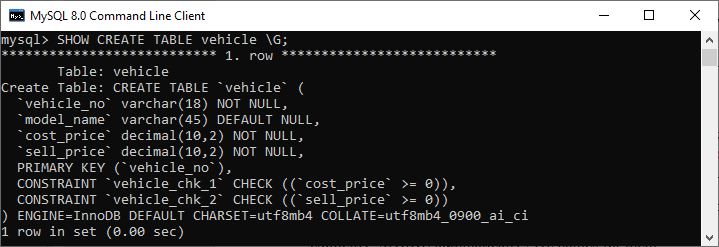

That is was the DB interactions that were making the Ruby code so slow. And, at the time, they used that as evidence to say how much better the language was.Īnyway, months later, in a different conversation, they talked about how after it was all said-and-done, they realize that the big change in the code conversion was a change to the way they were doing the database queries. And then when they rewrote it in Golang, it took like 15-minutes or something. Anyway, months ago, when this first came up, they were saying how a process that ran in Ruby took like 3-days to complete.
#Mysql join latest record how to
It was some migration code that they were changing. how to join them together, so that, i get the latest record on tableA and latest record on tableB link by socialnum i tried following sql, it work: SELECT FROM tableA LEFT JOIN tableB ON tableA.socialnum tableB.socialnum WHERE tableA.id IN (SELECT MAX (id) AS id FROM tableA GROUP BY socialnum) AND tableB.id IN (SELECT MAX (id) AS id. Of course, with all things, you just have to test it in your environment with your particular volume of data and index configurations.įascinating post by - Using LATERAL Joins To Get "Top N" Records From Each Group In MySQL 8.0.14 touched a nerve with me 🤣 I think it was on the Shop Talk podcast, or maybe it was CodePen Radio - on one of them, they were talking about converting code from Ruby on Rails over to Golang. Yes, it has to do some filesort operations as well as something called Rematerialize (which I've never seen before) but, I think you'll find that this is actually quite optimized. But, if we run an EXPLAIN on the SQL query we can see that it is using the PRIMARY key index for the member table and the IX_by_member index on the blog_comment table. You may be looking at this SQL and thinking to yourself, "That can't be fast!" And, it's likely not as fast as some less complex queries. And, I love that the SQL engines are constantly adding new and groovy functionality. Isn't SQL just thrilling! Every now and then, I'll hear someone diminish SQL as something that people "have" to use. Of course, in your application code you'll have to deserialize the JSON payload to get the comments as an array however, that should be a capability natively built into your application runtime. This has allowed us to get the "Top N" comments for each member in the group. easily grab the "TOP N" corresponding records (using LIMIT) for each row in theĬ.memberID = m.id - Per row join condition.Īnd, when we run this in MySQL 8.0.14+, we get the following output:Īs you can see, the JSON_ARRAYAGG() and JSON_OBJECT() functions have taken the collapsed / grouped LATERAL join records and exposed them as a JSON payload in the MySQL recordset.

Since this lateral join derived table is being calculated per row, we can This per-row derived table is made available within the SELECT clause. By using a LATERAL JOIN (MySQL 8+), we can create a derived table PER EACH ROW of the Applied to each row in the LATERAL derived table. each outer row into a JSON payload (array of objects). Using the JSON functions (MySQL 5.7.22+), we can collapse the "TOP N" rows for ) ENGINE=InnoDB AUTO_INCREMENT=10 DEFAULT CHARSET=utf8 Insert into `tableA`(`id`,`fullname`,`social_num`,`email`) values (1,'David TABLE `tableB` ( ) ENGINE=InnoDB AUTO_INCREMENT=13 DEFAULT CHARSET=utf8 LEFT JOIN tableB ON tableA.social_num = tableB.social_numīut how do i show all of other user from tableA togather as well, like Morris Q How to join them together, so that, i get the latest record on tableA and latest record on tableB link by social_num? I manage to get the latest record by auto increment id by using the following sql for tableA and tableB: SELECT * I had 2 table, tableA and tableB looking like this: This question has been asked at here as well.


 0 kommentar(er)
0 kommentar(er)
